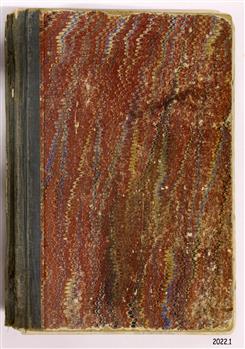Historical information
The author Herbert Whitney has written and illustrated his information about shipwrecks in an exercise book. This book is the second that he has written on the topic. The first book was about Victorian shipwrecks and the family has not been able to trace that book.
The author was the uncle of Mrs W I Holmes, need Kathleen Whitney.
Significance
The book is significant for its collection of information and illustrations about shipwrecks.
Physical description
Herbert Whitney wrote a an illustrated book about shipwrecks. It is the anther's second book on the subject of shipwrecks. A note typed on letterhead is attached to the inside cover.
Inscriptions & markings
Printed letterhead "TELEPHONE: WOOLSTHORPE 7" , " KULEAN PASTORAL COY. Pty Ltd", 3279"
Typed text "This book was completed by Herbert Whitney, Uncle of Mrs W.I. Holmes, nee Kathleen Whitney. There is no name attached, and it is book No.2. All attempts to trace No 1 have failed -- it is the most important- -- on "Victorian ships."






